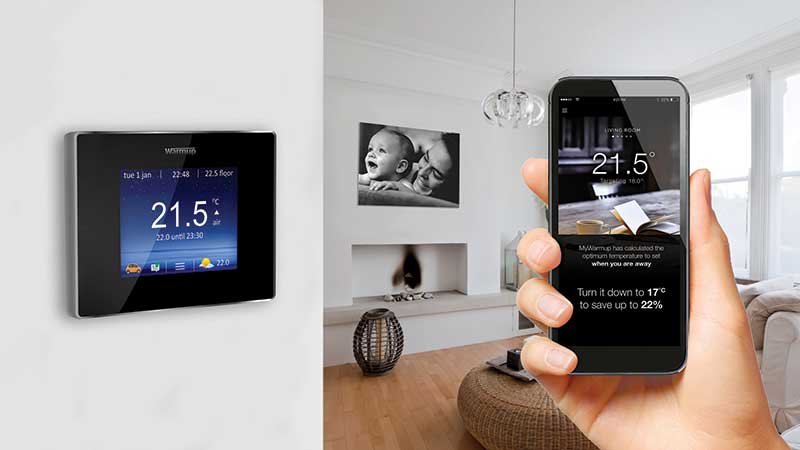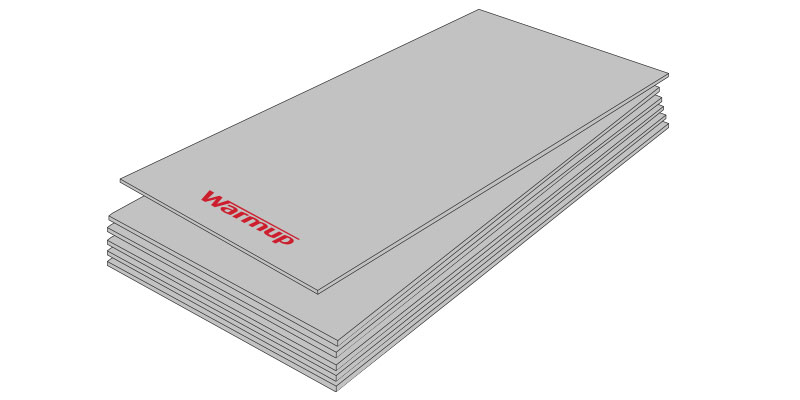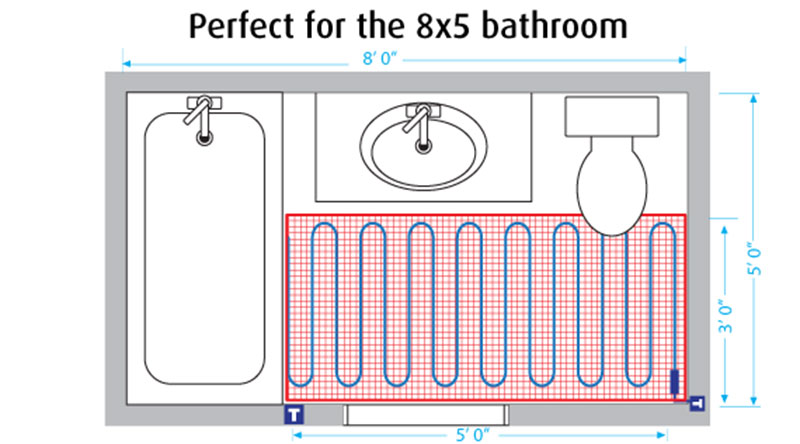Knowing the heat output of an underfloor heating system is essential to ensure your room is heated to the desired temperature. The last thing you want is to be cold after installing the system, so in order to accurately tell how much heat you require to heat a room, you’ll need to know the heat loss and then choose an underfloor heating system with a heat output to match.
Read on for expert advice on heat output and what factors affect the heat output of an underfloor heating system. As always, if you have any questions, our friendly Customer Services Team is available on 0345 345 2288.
FLOOR SIZE
The size of the heated floor area is directly linked to the heat output as the larger the heated area, the higher the maximum heat output of the system. However, the size of the heated floor area in relation to the overall room size affects the output too as the larger the room gets, the higher the heat loss becomes. If the heated area is significantly smaller than the overall floor or room size (<80%), it may be difficult for an underfloor heating system to create enough heat for primary heating unless the home is well-insulated.
FLOOR TEMPERATURE & FLOOR TYPE
The floor temperature also directly affects the heat output where, the higher the floor temperature, the higher the heat output from the floor. Not all floor finishes can, however, to be heated to a high temperature so it’s important to note that whereas increasing the floor temperature increases the heat output, it is also dependent on the floor finish you choose.
Dense and solid materials such as tile and stone have a good thermal conductivity meaning that the heat can better transmit from the heating element to the floor surface. Tile and stone can also be heated to 29+°C to provide higher output. Soft floor materials such as wood, laminate, linoleum have a comparatively poor conductivity and can also only be heated to 27°C degrees, meaning a certain maximum heat output, depending on the size of the heated area. Again, if your chosen floor finish only allows a floor temperature of 27°C degrees and the heat output requirement is higher than what can be achieved with a 27°C degree floor, you could consider changing the floor material in order for an underfloor heating system to work as the sole source of heat.

The higher the floor temperature, the greater the heat output, but some floor finishes have a top temperature restriction. It is always best to check with the flooring manufacturer.
CHOICE OF A THERMOSTAT AND AIR TEMPERATURE
Most modern thermostats control the floor temperature based on either an air or floor temperature and utilising an air or floor probe in measuring this. As the thermostat switches the heating “on or off”, its accuracy, as well as the probe’s accuracy, can have a significant impact on the heat output. Additionally, the higher the desired room temperature, the more heat output you need to reach the temperature.
This is relevant especially in bathrooms where the desired room air temperature is relatively high, say 23°C degrees (compared to the usual room temperature of a living room of 21°C.) Poor controls or poorly placed thermostat probes can lead to under and overheating rooms and in severe circumstances, even damage the floor finish so investing in a high-quality thermostat is advisable. The 4iE Smart WiFi Thermostat provides accurate temperature control and can save up to £200 on energy use by finding smarter ways to heat your home.

An accurate room temperature control is essential in ensuring the correct heat output. A smart thermostat does not only offer accurate control, but can also save money on heating bills.
FLOOR INSULATION INCREASES HEAT OUTPUT
The heat output to the floor surface can be significantly increased by using insulation, such as Warmup insulation boards, under the heating. This may be immediately below the heating units, pipes or below the screed or medium that the heating is embedded within. If no insulation is used, the heat generated will move not only upwards but downwards as well and in the worst case, even heat the ground below the structure wasting energy, money and the heat you require.

Warmup insulation boards come in a range of thickness offering different levels of insulation.
If you don’t want to change the floor finish or can’t change the size of the heated floor area, increasing overall insulation is a good way to reduce heat loss and achieve a lower heat output requirement. Adding cavity wall, roof and additional floor insulation are all good ways to keep the heat in and will lower the heat output requirement of any heating system.
UNDERFLOOR HEATING SYSTEM POWER
The maximum power of the system is normally specified in Watts per square metre. If your floor is well insulated and you have a reasonably modern home, the power of an underfloor heating system usually needs to be between 65-85W/m² to give the required output. When it comes to choosing underfloor heating, a 150-200W/m² system is usually specified to reduce heat up times as the system will not be “on” continuously. When the system is only “on” half of the time the room is used, the power provided is half of the Wattage of the system. That is, a 150W/m² system usually provides 65-85W/m² per hour.
BATHROOMS AND OTHER ROOMS WITH PERMANENT FIXTURES
In certain rooms, such as bathrooms, large parts of the room are covered by permanent fixtures such as baths, toilet or sink. As underfloor heating should not be fitted under permanent fixtures, in these circumstances only small parts of the floor surface can be heated. This can significantly affect the heat output.

The size of the heated floor area is directly linked to the heat output so you should aim to heat as much of the floor area as possible.
OVERCOMING SPACE LIMITATIONS
If you’re installing underfloor heating in a small room with a relatively little area that can have wire or pipe installed, it is best to choose highly conductive floor finishes. Choose tile and stone flooring that can be heated to a high floor temperature, providing higher heat output and room temperature than what would be achieved by using soft floor finishes. Depending on the heat loss of the area, it may also be necessary to use a secondary form of heating to increase the heat output. In bathrooms, heated towel rails and wall heaters are an ideal option as they contribute towards the required heat output.
This heat flow greatly depends on the structure of the material and the molecules within it. For example, heat will travel much quicker through a dense structure such as a tile; than a more porous structure such as wood. In both cases, the heat will eventually spread throughout the material until it reaches thermal equilibrium (balanced temperature).
A FINAL CONSIDERATION…THERMAL BLOCKING
As a final note, bear in mind that once you’ve gone through all the effort of ensuring your underfloor heating system provides enough heat, it is crucial that you do not block the heat being emitted from the floor. Insulating and heat-blocking materials, such as rugs, furniture (especially bean-bag chairs!), will significantly hinder the performance of the system.
If you know your heat loss and would like to discuss the heat output of an underfloor heating system and whether it will provide enough heat to your room, contact us and we will help you to estimate the heat output.
View our product range and find the perfect underfloor heating system to your installation.

















